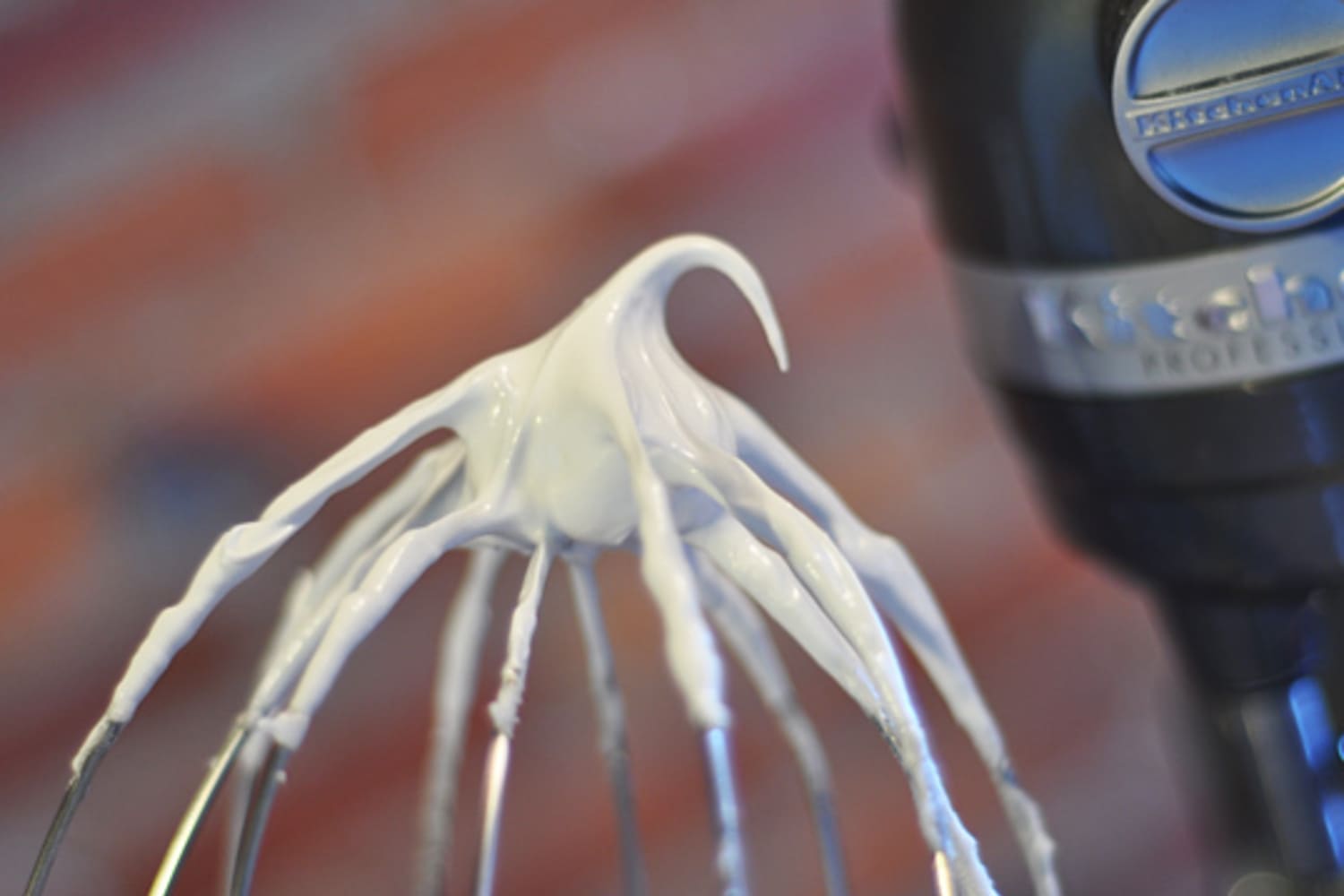Baking is one place where you don’t have a lot of wiggle room. Read a recipe wrong or try an ingredient substitution, and the results can become very unpredictable. So when a recipe says to “whip to firm peaks,” you know we want to get it right! Here’s a visual guide to help us out.
The stages of “peaks” is the same for beating egg whites or making whipped cream. In this guide, we’re using whipped cream. We’re also using a standing mixer on the second to highest setting, but you can also use a hand mixer. If you need a work-out, you can also try whipping by hand!
A Guide to Soft, Firm, and Stiff Peaks
After a few minutes of whipping on medium speed, the cream should be getting foamy, but still so thin that it won’t hold a shape at all.
When you turn your whisk upside down, the peaks are just starting to hold. They’re soft and melt back into themselves after a second.
Now when you turn your whisk upside down, the peaks will hold and the ridges are more distinct, but the tips fold back on themselves.
Turn the whisk upside down, and those peaks hold proudly! They should point straight up without collapsing at all (or maybe a little bit just at the very tips). The mixture is thick and heavy.
It’s possible to take it too far. After the stiff peak stage, egg whites will start to look grainy and dull. They will eventually collapse back on themselves. Whipped cream will also get grainy and will start to separate into fat and liquid.
There’s not much to do about over-whipped cream other than keep whipping until it becomes butter! If you catch egg whites just as they are starting to turn grainy, you can try adding another egg white into the bowl to bring it back.
Also, sugar stabilizes egg whites. If you’re making meringue or anything where sugar has been added during whipping, you don’t have to worry about over-beating them as much.

